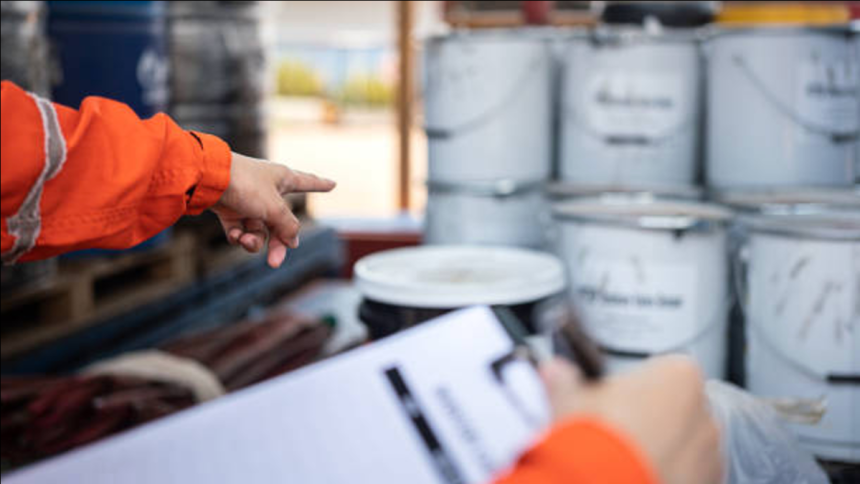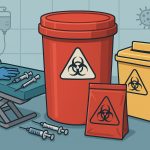In laboratory environments where chemicals, biological agents, and radioactive materials are frequently handled, proper hazardous waste disposal is not just a regulatory requirement—it’s a critical practice for safety, environmental protection, and institutional compliance. From research labs in academic institutions to diagnostic labs in medical facilities, the handling and disposal of hazardous waste must follow strict procedures to avoid contamination, injury, or costly legal repercussions.
The disposal process involves three fundamental stages: segregation, labeling, and treatment. Each step plays an essential role in ensuring that waste is managed responsibly and in accordance with local and federal regulations.
The Importance of Proper Waste Segregation
Segregation is the first and most crucial step in managing hazardous waste. It ensures that incompatible materials are kept apart, minimizes the risk of chemical reactions, and streamlines downstream disposal processes.
Hazardous waste in laboratories typically falls into several categories:
- Chemical waste (e.g., solvents, acids, reactive compounds)
- Biological waste (e.g., cultures, pathogens, human tissue)
- Sharps and clinical waste (e.g., needles, glass pipettes, scalpels)
- Radioactive waste (in facilities dealing with isotopes or nuclear materials)
Segregation should occur at the point of generation. Labs must provide color-coded, clearly marked containers for each waste category. For example:
- Red containers for biohazardous waste
- Yellow for clinical or infectious waste
- Black for chemical waste
- Designated containers for radioactive materials
Not only does proper segregation reduce the risk of accidents, but it also allows waste management services to process materials more efficiently and safely.
Labeling: Clarity Saves Lives
Once hazardous waste is correctly segregated, it must be accurately labeled. Mislabeling or lack of labeling can lead to improper handling, exposure to unknown hazards, or incorrect treatment methods. Regulatory agencies such as the Environmental Protection Agency (EPA) and the Occupational Safety and Health Administration (OSHA) require detailed labeling on all hazardous waste containers.
An effective labeling system includes:
- Identification of contents: Clearly stating the chemical or biological constituents.
- Hazard class symbols: Indicating whether the material is corrosive, flammable, toxic, etc.
- Date of accumulation: To comply with time-based storage regulations.
- Generator details: Including lab name, location, and responsible personnel.
Additionally, containers should be tightly sealed and placed in secondary containment if there’s any risk of leakage. Consistent training is essential to ensure that all lab personnel understand how to label hazardous waste accurately and why it matters.
Treatment and Final Disposal Methods
The final step in the hazardous waste disposal chain is treatment, which varies depending on the type and classification of the waste. The goal of treatment is to neutralize, detoxify, or reduce the volume of hazardous materials before final disposal. Some of the most common treatment methods include:
1. Chemical Neutralization
Used for acidic or basic waste, neutralization involves adding a reagent to render the waste harmless. For example, a strong acid may be neutralized using a base before being discharged under permitted conditions.
2. Autoclaving and Sterilization
Biological waste is typically sterilized through high-pressure steam (autoclaving) before disposal. This process kills pathogens, rendering the waste non-infectious and suitable for landfill in many cases.
3. Incineration
Certain hazardous wastes, especially organic solvents and clinical waste, may require high-temperature incineration in EPA-approved facilities. This method ensures complete destruction of contaminants.
4. Secure Landfilling
After appropriate treatment, some residues may be disposed of in specially engineered hazardous waste landfills that prevent leaching and environmental contamination.
Special Focus: Sharps Disposal in Maryland
Among the most regulated categories of lab waste is sharps waste—needles, syringes, scalpel blades, and broken glass that can puncture the skin and transmit infections. Sharps Disposal in Maryland follows strict guidelines laid out by the Maryland Department of the Environment and federal standards.
Best practices include:
- Use of FDA-approved, puncture-resistant containers with tight-fitting lids
- Labeling containers with the biohazard symbol
- Storing containers in an upright, stable position until full
- Never overfilling or manually compressing sharps waste
Maryland mandates that only licensed medical waste disposal companies handle sharps pickup, ensuring safe and compliant destruction. Companies like Secure Waste specialize in collecting and processing sharps from labs, clinics, and hospitals across the state, offering both routine pickups and emergency services.
Training and Compliance: A Lab-Wide Responsibility
Safe hazardous waste management is only effective if all lab personnel—from interns to principal investigators—are trained in the proper procedures. Compliance training should cover:
- Waste categorization and segregation
- Labeling protocols
- Emergency response for spills or exposure
- Storage limits and container handling
- Reporting and documentation requirements
Institutions should also conduct regular audits, update safety data sheets (SDS), and engage with licensed hazardous waste handlers to remain in compliance with all regulations.
Conclusion: Managing Sharps Disposal in Maryland Safely
Effective hazardous waste disposal in labs requires a systematic approach rooted in segregation, accurate labeling, and compliant treatment. With strict regulations around medical and chemical waste—especially when it comes to Sharps Disposal in Maryland, laboratories must partner with certified waste management providers to ensure safety, legal compliance, and environmental responsibility. A disciplined, well-trained lab team is the first line of defense in preventing hazardous incidents and maintaining a safe, sustainable work environment.
Lynn Martelli is an editor at Readability. She received her MFA in Creative Writing from Antioch University and has worked as an editor for over 10 years. Lynn has edited a wide variety of books, including fiction, non-fiction, memoirs, and more. In her free time, Lynn enjoys reading, writing, and spending time with her family and friends.















